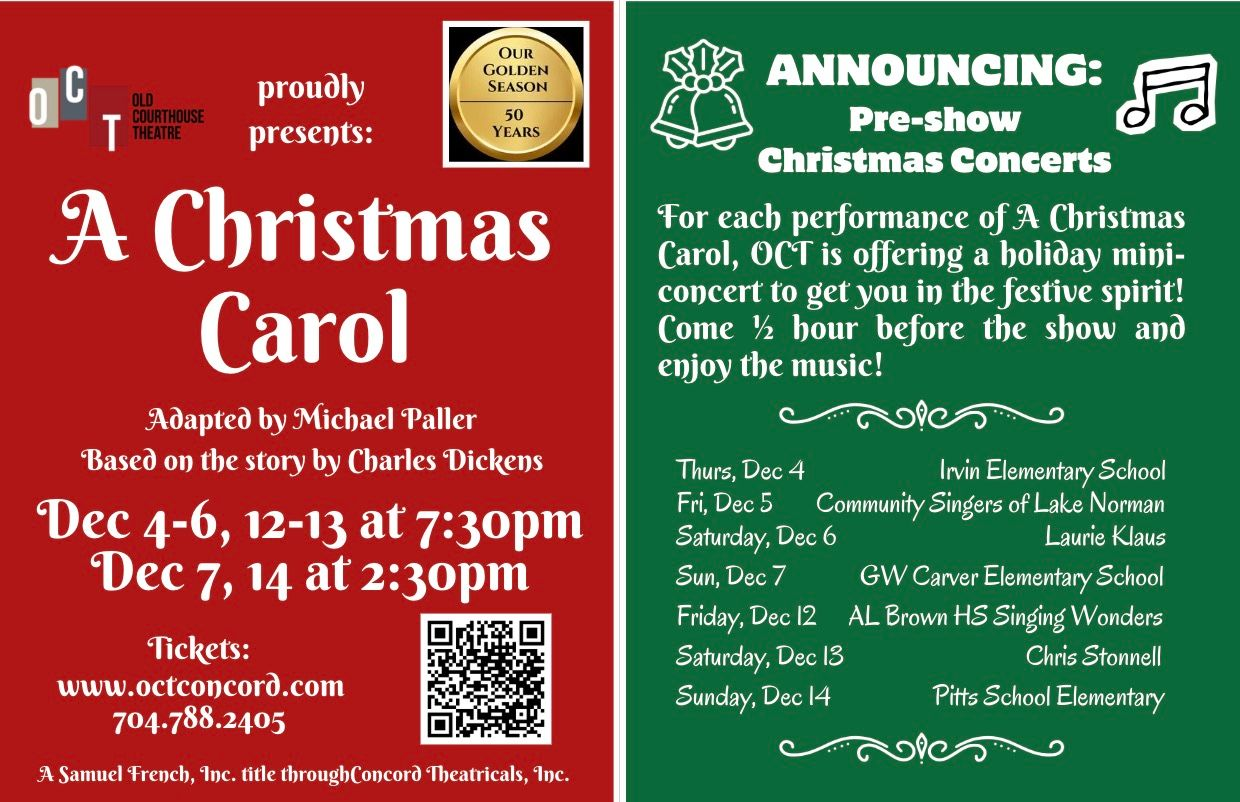Charles Dickens’ “A Christmas Carol” Through the Ages
How One Timeless Tale Continues to Inspire Generations

The Enduring Legacy of “A Christmas Carol”
OCT’s upcoming performance of “A Christmas Carol” follows a long tradition of presenting this classic holiday production. In December, OCT presents Michael Paller’s adaption of “A Christmas Carol”. This fresh approach to the classic tale faithfully conveys the magic of Dickens. On Christmas Eve in 1843, friends and family gathered at Dickens’ home ask him to tell a story, but he refuses to work on Christmas Eve. If there is going to be a story, each must take a part in the telling. Performances run through December 4 to 14 on OCT”s historic main stages. Ticket information is available on our website at www.octconcod.com.
Few stories have captured the imagination and hearts of readers across the globe like Charles Dickens’ “A Christmas Carol.” First published in December 1843, this novella has transcended its Victorian origins to become a cherished part of holiday traditions around the world. But what is it about this story of Ebenezer Scrooge’s redemption that has allowed it to endure and evolve through the ages?
The Victorian Roots: A Story Born of Its Time
When Dickens wrote “A Christmas Carol,” England was in the midst of profound social and economic change. The Industrial Revolution had transformed society, but poverty, child labor, and stark inequality were rampant. Dickens, himself familiar with hardship, channeled his concern for social justice into the character of Scrooge—a cold-hearted miser who eventually learns the value of compassion and generosity.
The novella was an instant success, selling out its first printing in days. Its vivid characters, supernatural elements, and powerful message resonated deeply with Victorian readers, many of whom were grappling with questions about morality, charity, and the true meaning of Christmas.
Adapting to New Media: Stage and Screen
As the decades passed, “A Christmas Carol” found new life beyond the printed page. The story was adapted for the stage almost immediately after its publication, and soon became a staple of British theater during the holiday season. With the advent of film, radio, and television, the tale was reimagined in countless ways—each adaptation reflecting the tastes and concerns of its era.
From classic black-and-white films to animated versions for children, from musical renditions to Muppets and modern-day retellings, “A Christmas Carol” has proven endlessly adaptable. Each version highlights different aspects of the original story—sometimes emphasizing the supernatural, other times focusing on Scrooge’s emotional journey or the social commentary at its core.
Modern Interpretations: A Universal Message
What makes “A Christmas Carol” so enduring is its universal themes. The journey from selfishness to empathy, the possibility of personal transformation, and the importance of kindness and community are messages that remain relevant no matter the century. Modern adaptations often update the setting or characters to reflect contemporary issues, but the heart of the story stays the same: it’s never too late to change, and small acts of generosity can have a profound impact.
In recent years, “A Christmas Carol” has also inspired new forms of storytelling, including graphic novels, podcasts, and immersive theater experiences. Each generation finds its own way to connect with Dickens’ message, ensuring that the tale remains a living tradition.
Why “A Christmas Carol” Still Matters
As we celebrate the holidays, “A Christmas Carol” invites us to reflect on our own actions and attitudes. Are we reaching out to those in need? Are we open to change? The ghosts that visit Scrooge may be fantastical, but the story’s call to compassion and self-reflection is real—and as urgent today as it was in Dickens’ time.
Whether you’re reading the original novella by candlelight, watching a beloved film adaptation with family, or seeing the story performed on stage, “A Christmas Carol” continues to remind us of the best parts of the human spirit: hope, generosity, and the power of redemption.
Share this Post
Recent Articles











